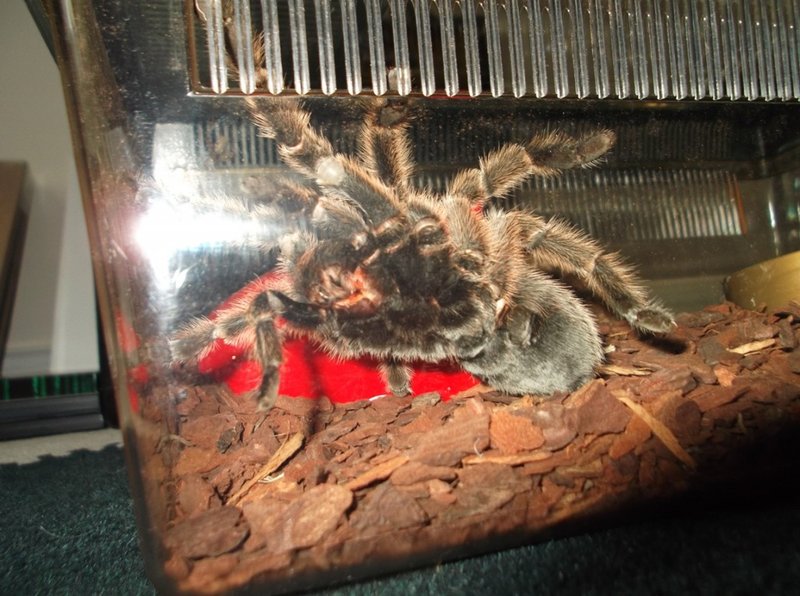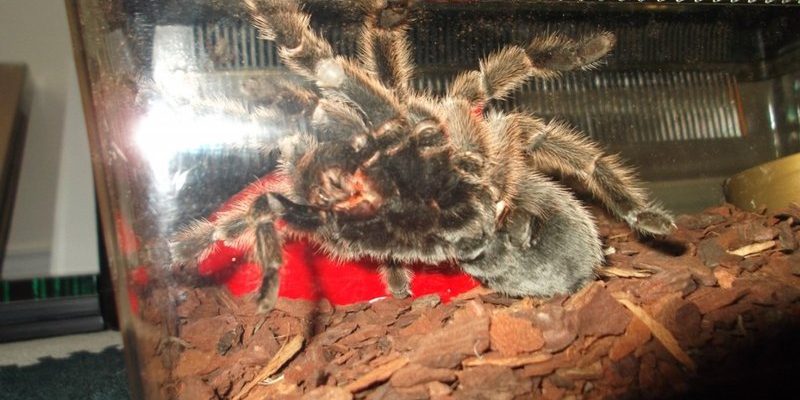
Taking care of a Chilean Rose Tarantula can feel like embarking on a mini-adventure right in your own home. Imagine setting up its habitat, learning to read its moods, and even feeding it—it’s like a tiny, eight-legged roommate! Sure, it’s a bit different from a dog or cat, but if you’re ready for the challenge, you might find it’s just as rewarding. Let’s dive into everything you need to know about keeping this captivating spider as a pet.
Understanding the Chilean Rose Tarantula
The Chilean Rose Tarantula, or *Grammostola rosea*, is a species that’s become quite popular among exotic pet enthusiasts. Known for their docile nature and diverse colors, they can be brown, black, or even a lovely rosy hue. These spiders are native to the arid regions of Chile, which means they’re surprisingly hardy and adaptable, making them great for new pet owners.
You might be wondering about their lifespan—these tarantulas can live up to 15 years or more with proper care! That’s a long commitment, similar to adopting a dog. While they’re not cuddly like a cat, many owners appreciate their charm and low maintenance needs.
Setting Up the Perfect Habitat
Creating a suitable environment for your Chilean Rose Tarantula is crucial. Think of it as building a cozy home! A 10-gallon tank is usually a good starting point, but more space is always welcome. Make sure to provide proper ventilation, as tarantulas need fresh air to thrive.
Substrate: Use a substrate that retains moisture but also drains well, like coconut fiber or potting soil. Aim for a depth of about 2-4 inches. This gives your tarantula enough room to burrow, which is a natural behavior.
Hiding Spots: Include plenty of hiding spots. You might want to add rocks, logs, or even a small cave made from a plant pot. Tarantulas are shy creatures, and having places to retreat helps them feel secure.
Temperature and Humidity: Keep the temperature between 70°F and 80°F and the humidity around 40-60%. A simple thermometer and hygrometer can help you monitor these levels. If it’s too dry, mist the tank lightly, but be careful not to overdo it. You wouldn’t want to create a swampy mess!
Feeding Your Chilean Rose Tarantula
Feeding your tarantula is one of the more exciting parts of pet ownership. Chilean Rose Tarantulas are carnivorous and happily munch on insects like crickets and mealworms. Generally, you should feed them once a week. Here’s how:
1. Choosing Food: Opt for appropriately sized prey. A good rule of thumb is to pick insects that are no bigger than the width of your tarantula’s body.
2. Live vs. Pre-killed: Using live insects is often more stimulating for them, but pre-killed ones are safer if you’re unsure about feeding live prey.
3. Feeding Technique: Gently place the food in the enclosure and watch your tarantula’s hunting instincts kick in. It’s fascinating to see!
Remember that overfeeding can lead to health issues, so stick to the once-a-week rule. If you notice a mealworm or cricket hanging around after a few days, it’s best to remove it to keep the habitat clean.
Behavior and Handling
One of the joys of owning a Chilean Rose Tarantula is observing their behavior. They can be surprisingly active, especially during the evening. You might catch them roaming around their habitat or webbing up their space.
Handling, though, is a bit of a gray area. While they can be handled, it’s generally not recommended, especially for beginners. They can be skittish and may bite if they feel threatened. If you want to handle your tarantula, do it carefully:
– Make sure your hands are clean and dry.
– Approach slowly and gently.
– Use a container or cup to coax it out rather than grabbing it directly.
Here’s the thing: while many owners enjoy the experience of holding their tarantula, it’s not essential to a happy pet. Just sitting and watching them can be just as fulfilling!
Common Health Issues
Like any pet, your Chilean Rose Tarantula can face health issues. Knowing the signs can help you catch problems early. Common health issues include:
– Molt Problems: Tarantulas periodically shed their exoskeletons, a process called molting. If you notice your spider sitting still for a long time, it might be in the middle of this. Ensure the humidity is right, as too dry conditions can cause complications during molting.
– Obesity: Overfeeding can lead your tarantula to become overweight. Keep an eye on its physique; if it seems too bloated, cut back on the food.
– Infections: Soft spots on the body can indicate infections. If this happens, consult an exotic pet vet for advice.
Regularly check on your tarantula’s condition and make adjustments to their habitat as needed.
Final Thoughts on Pet Ownership
Owning a Chilean Rose Tarantula is definitely a unique experience. If you’re someone who appreciates the unusual and enjoys observing fascinating behaviors, this pet could be a perfect match for you. They can teach you patience and provide a glimpse into a world that many people never see up close.
Always research and prepare yourself before diving into any pet ownership, especially with exotic pets. Understanding their needs, behaviors, and habitats can make the journey rewarding and enjoyable. Remember, every time you feed or watch your spider, you’re not just caring for a pet; you’re bringing a little piece of nature into your home.

